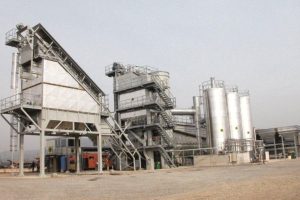Posted on November 29, 2021 by Steven Kohl
There is no question the policy considerations underlying Environmental Justice (EJ) are valid. As a society, we need to recognize that some communities are more at risk than others and devise means to mitigate these risks or at least not consciously add to them if possible. But there is a problem – our primary environmental laws at the federal and state level do not contain express provisions to address EJ concerns. Ad hoc efforts by regulatory agencies to address purported EJ concerns will result in frustration within both regulated and EJ communities, and impair economic development in communities that need such development. A recent permitting situation in Michigan is illustrative.

Ajax Materials submitted an application to the Michigan Department of Environment, Great Lakes, and Energy (EGLE) in December 2020 to construct, as a minor source, a hot mix asphalt plant on a 100-acre Greenfield site zoned for heavy industry in Genesee Township, Michigan, near the City of Flint border. Michigan has permitted over sixty such asphalt plants. Permitting these types of plants is typically considered so routine that EPA has created a general permit for use in Indian Country.
In Michigan, permitting of minor sources is expected, by rule, to be completed within 180 days if no public comment period is necessary. Even with 30 days of public comment, the permit decision is expected within 240 days. A final decision on the Ajax permit took almost 11 months and 83 days of public comment. Why did it take so long? Apparently because of the proposed plant site’s proximity to the City of Flint, Michigan and to communities characterized in EPA’s EJSCREEN with a relatively high “EJ Index”. As EGLE explained in a letter to the EPA Administrator:
“While applying federal and state laws to the letter—according to our department’s longstanding practice and consistently validated precedent—EGLE broke new ground on this permit in the extent to which we applied location-based environmental justice considerations to the process. In addition to our standard high level of attentiveness to public comment, including those offered by EPA Region 5, we were more proactive in our engagement with the community and use of our legal authority in this matter than we have been for any minor source permit in institutional memory.”
The EPA Region 5 comments referred to were extensive, an unusual action for a state-issued minor permit. They “suggested” that air modeling submitted in support of the application should be redone using five years of meteorological data, instead of the typical one year of data for minor sources. They also “suggested” that EGLE apply Michigan’s air toxics rules even though such rules are not federally enforceable and EPA’s general permit addresses only criteria pollutants.
The permit establishes emission limits lower than necessary to meet NAAQS, protect PSD increments, or satisfy EGLE’s own risk based criteria for air toxics. Indeed, EGLE’s letter to EPA Administrator Regan acknowledges that the permit is unprecedented and invites EPA to conduct an additional review of the Ajax permit. It remains to be seen whether EGLE acted within its legal authority. What is clear is that there is nothing in the Clean Air Act, EPA’s implementing rules, or Michigan law that expressly allows or requires application of “location-based environmental justice considerations” as EGLE says it has done.
It is doubtful that either the Flint community or Ajax is happy with the outcome. EGLE permitted a plant that members of the Flint community do not want to see built. While Ajax gets to build the plant, it is subject to much more stringent permit requirements than any other asphalt plant in Michigan. All that has been achieved is EGLE being able to say the permitting process was “woke” to EJ considerations.
To avoid more “woke” permitting and an ad hoc approach to “location-based environmental justice considerations” we need statutory and regulatory structures that will provide transparency for how EJ considerations will be addressed in permitting. For example, as is the case for PSD permits, site-specific air monitoring could be required in order to establish background levels for air contaminants of concern to better assess the impact of emissions from a new project. What companies like Ajax need is a clear set of standards so they can make informed judgments upfront. But maybe there is another solution for Ajax and other asphalt companies — convince a local Tribal Nation to acquire a proposed site and construct the plant under EPA’s general permit.
